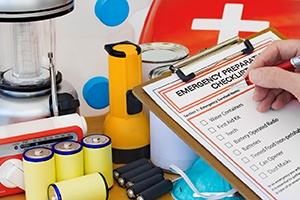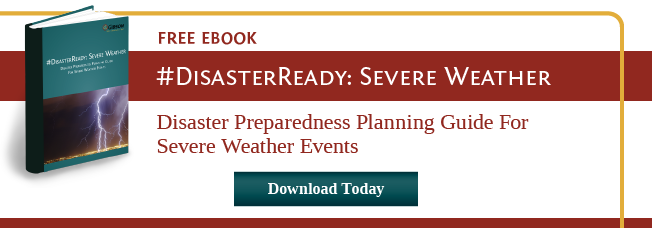 Spring showers can include severe weather. This week is Severe Weather Preparedness Week. The focus is to better educate and prepare about the hazards of severe thunderstorms, tornadoes, and flash flooding.
Spring showers can include severe weather. This week is Severe Weather Preparedness Week. The focus is to better educate and prepare about the hazards of severe thunderstorms, tornadoes, and flash flooding.
Lightning kills more people each year than tornadoes. It can strike as far as 10 miles away from any rainfall. If you can hear thunder, you are in danger from lightning. Below are tips for staying safe from lightening. When you see lightening:
- Avoid open areas.
- Stay away from isolated tall trees, towers, or utility poles. Lightning tends to strike the taller objects in an area.
- Stay away from metal conductors such as wires or fences. Metal does not attract lightning, but lightning can travel long distances through it.
- Avoid showering during lightning storms as electricity can travel through water pipes.
- Spread out if you are with a group of people.
Tornadoes
Tornadoes occur year-round but predominately from April to June. Primary hours are from 3 p.m. to 8 p.m. with a second peak from 12 a.m. to 3 a.m. Staying safe includes:
- Talking about tornadoes with your family so everyone knows where to go if a warning is issued. Discussing ahead of time helps reduce fear, especially for younger children. Identify a safe place in your home where household members and pets will gather during a tornado: a basement, storm cellar, or an interior room on the lowest floor with no windows.
- Gathering in a hallway in the center of the building if you live in a high-rise building. There may not be time to get to the lowest floor.
- Checking with your workplace and your children's schools and day care centers to learn about their tornado emergency plans.
- Choosing a safe place when in a mobile home, like a nearby sturdy building. If a mobile home park has a designated shelter, make it the safe place.
- Creating an emergency kit and replenishing any items missing or in short supply, especially medications or other medical supplies. Have a battery powered or crank powered radio to listen for updates.
Flash Flooding
On average, floods kill more people than any other severe weather hazard. Floods are most dangerous at night, when it is more difficult to recognize their dangers.
- Avoid walking or driving through flood waters. Six inches of moving water can knock you down and one foot can sweep a vehicle away.
- Do not drive over bridges that are over fast-moving floodwaters. Floodwaters can scour foundation material from the footings and make the bridge unstable.
- If there is a chance of flash flooding, move immediately to higher ground.
- If floodwaters rise around your car but the water is not moving, abandon the car and move to higher ground. Do not leave the car and enter moving water.
- Avoid camping or parking along streams, rivers, and creeks during heavy rainfall. These areas can flood quickly and with little warning.




